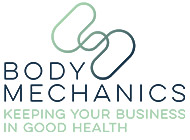How to Adapt Corporate Health and Wellbeing Programmes to fit Hybrid Working
Hybrid working has required organisations to adopt a blended approach to both business management and employee wellbeing. Rethinking how best to deliver health and wellbeing programmes to your employees needn’t be overwhelming - it’s time to consult, review and to get creative!
In this short guide, we give you seven pieces of advice which are key to getting health and wellbeing right for your employees and ultimately, your business.
Ask them - send out a poll or survey to staff to get a better understanding of what their current challenges are and where they’d like support. Have their challenges changed because of Covid? Because of a change in work practices? If so, how? What are their biggest stress points in life generally - at home, at work, as an individual? To support your staff competently, you first need to understand their requirements.
Maintain Balance - try not to favour one aspect of health and wellbeing over another. Find a way to keep all services accessible and possibly look and introducing new ones where necessary.
Prioritise - planning and optimisation - Accessibility is key. Firstly, who needs your support here and now? Who is currently struggling? Your organisation holds a wealth of information about your employees, so use it to identify who NEEDS which type/s of health and wellbeing service/s, how often and how they are best to receive this support.
Next, identify those who are deemed ‘at risk’ - those who are subjected to particular occupational stresses and have an increased chance of sustaining an injury or developing a particular condition. Why wait for the worst to happen? Take a preemptive approach.
Finally, look at those who have already been identified as having a condition or injury and who are currently managing this. This allows you to adopt a preventative rather than curative approach and lets your employees know that you’re there should they need you.
Anyone who falls outside of these categories should still be able to access health and wellbeing services as and when they need them.
Prioritising and actively directing employees to relevant services enables you to reach the most vulnerable first, keeping them healthy and well and your business running as smoothly as possible. It also allows you to roll out or adapt your health and wellbeing programme in a manageable and focused manner.
Review Delivery Methods - hybrid working has undoubtedly brought about a greater reliance on technology and a greater level of autonomy to employees. So ask yourself, how can these two factors fit into your health and wellbeing programme without compromising the quality or the effectiveness of the services?
Can your services be accessed online or through an app - eg counselling sessions or fitness classes? Do they need to be face to face - eg counselling or physical therapies? Can they be in-office or at home or both - eg ergonomic desk assessments or physical therapies? Do they need to be delivered at a certain time or can they be accessed ad hoc - eg lunch and learns, webinars or Yoga classes?
A word of caution around the use of online access and apps - ensure they don’t make services feel impersonal or are perceived as a tick box exercise by your employees, as it completely undermines what you’re trying to achieve with employee health and wellbeing.
Automation - self serve - give your employees as much control as possible in order for them to access services. In doing so, it makes your employees feel empowered and they are more likely to engage with your health and wellbeing programme, as well as within the business overall. Automation greatly increases convenience, accessibility and can be extremely cost effective.
Rotation - by offering services on a rotation basis - weekly, monthly or quarterly - it ensures that accessibility is optimised. Not everyone will be in the office at the same time, nor will they necessarily be consistent with the days that they do come into the office or work from home.
If certain teams or departments have decided to adopt a regular working schedule, it's worth adding this to your databases and working in a more informed manner.
The Personal Touch - Health and wellbeing programmes are all about personalisation and accessibility. Give careful consideration to outsourcing to a provider with which you have no in-person relationship, particularly around mental health. People often like to know they can talk to a person and that they can build trust and rapport with them over time, as well as getting immediate and bespoke feedback. Employees using mental health services are most likely making themselves vulnerable and talking about sensitive issues, which is where an app falls flat. Technology doesn’t offer meaningful or insightful engagement. An impersonal one-size fits all approach to mental health, will most likely have a low uptake and will be wasted money from your budget. Online or app access for online fitness classes however is a far more suitable use of online or app access.
In summary
In order to provide a fit for purpose and best practice health and wellbeing programme, its important to get the basic foundation right. Work with what you already have in terms of services and employee data. Poll or survey your clients to better understand their needs - what services they need, how best to give them access and the most appropriate delivery methods. Health and wellbeing is all about making your employees know and feel understood and supported, so take time to ensure you get the correct balance of services and that personal connection.

